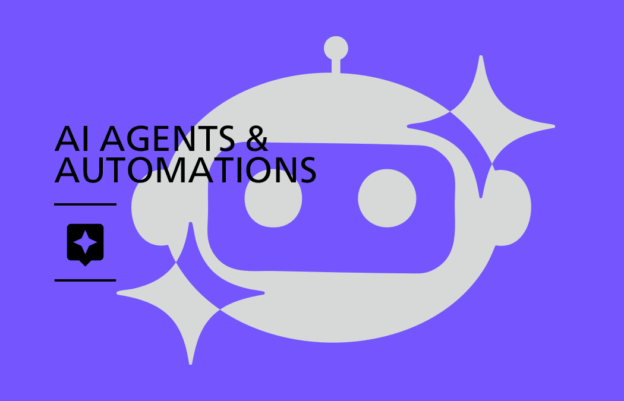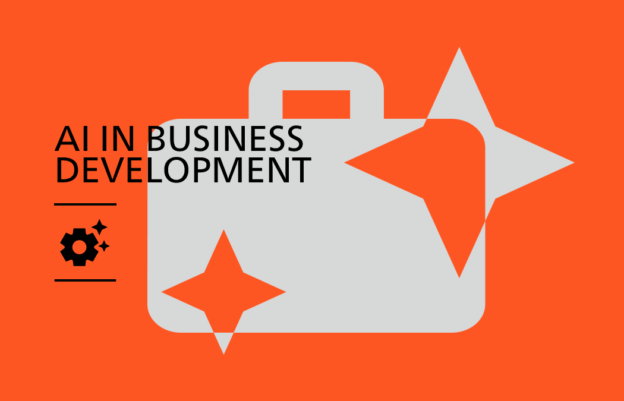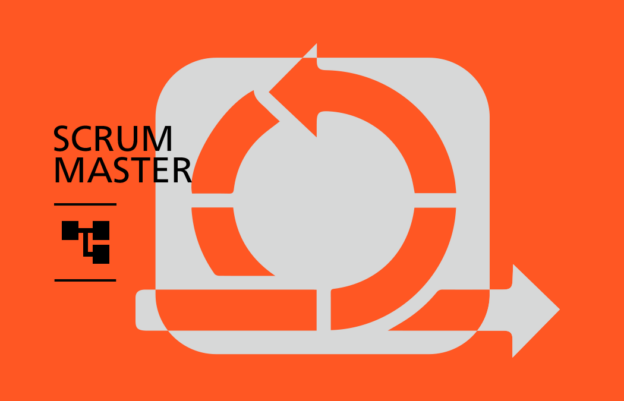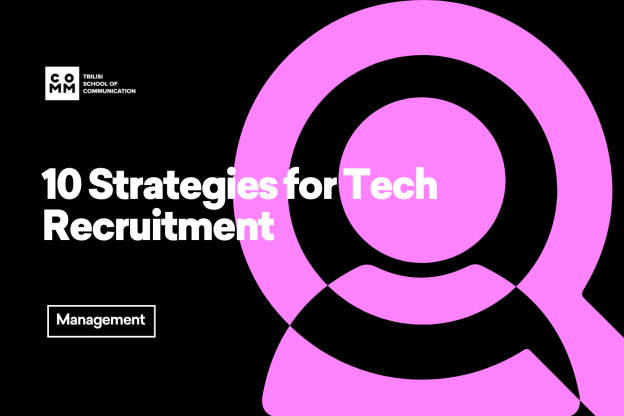

In today’s business environment, traditional project management methods fail to meet the demands of rapid product development and competitiveness.
The dynamic nature of the IT field has led to the development of Agile project management, with Scrum being its most popular framework. Agile methodologies, particularly Scrum, enable flexible project management and quick adaptation to changes while focusing on business and customer needs.
Additionally, the course prepares students for the PSM I certification.
Outcome
Skills Acquired: SCRUM Agile Sprint SDLC
-
Organizing team workflows, managing sprints, removing obstacles, and increasing team productivity
-
Integrating Agile principles and values into project and team management
-
Motivating and supporting the team — fostering teamwork and self-organization, and creating a collaborative and innovative environment
-
Process improvement — evaluating and enhancing Scrum processes through Sprint Retrospectives
-
Effective communication with stakeholders, the Product Owner, and other interested parties
-
Developing the ability to quickly identify problems
-
Being prepared for certifications like Professional Scrum Master (PSM1)
Wed 20:00-23:00 | Sat 12:00-15:00
 TBC installment
TBC installment
 BOG installment
BOG installment
Who is this course for?

Self-Development Enthusiasts
Individuals interested in Agile principles who want to acquire modern, in-demand professional skills or those considering a career transition into tech and seeking to build relevant expertise

Project Managers
Those looking to understand Scrum and integrate its methodologies into product development, as opposed to traditional project management approaches

Junior Scrum Masters
Those already working in a Scrum environment who want to deepen their knowledge and skills
Program includes
Alumni Club
Upon successful completion of the final exam, the graduate is automatically enrolled in the Alumni Club, and then gains access to exclusive events, content, and offers from our partner companies.
Work Based Learning
The course includes practice-based learning, including assignments/exercises and individual projects.
Bilingual Certification
Upon successful completion of the final exam, the graduate is automatically enrolled in the Alumni Club, and then gains access to exclusive events, content, and offers from our partner companies.
Syllabus
Pick your suitable time
Lecturers
Mariam Kukhianidze
Scrum Master
Mariam Kukhianidze
Scrum Master
Mariam is a certified IT professional with over 6 years of experience in both quality assurance and project management. She holds the following international certifications: SAFe 6.0 Scrum Master, PMI-ACP, PSM2, PSM1, CTFL (ISTQB). In project management, Mariam started her career with an organization’s Agile transformation and eventually became a Scrum Master. She currently holds the position of Team Lead at Singular.
 Linkedin
Linkedin
FAQs for this course
Your search Digital Designer did not match any documents
Unable to locate relevant information?
Get Free consultationYou may interest
Relevant Resources
Show More10 Strategies for Tech Recruitment
Tech recruitment is the process of attracting and employing qualified personnel for various positions in the technology industry. It has become particularly important due to the growing demand for professionals in this field. Companies that want to keep up with modern trends and compete with other businesses place crucial importance on the tech recruitment process.Nowadays, you may encounter many challenges in finding, selecting, and employing tech professionals. If you work in this field or want to continue your career, read this blog. Here, I'll tell you about 10 challenges that tech recruiters face in their work and the strategies they use to overcome them. 1. Shortage of Talents The number of vacant positions in the technology field is quite large, which leads to a growing demand for professionals. Recruiters need to put in a lot of effort to find a sufficient number of suitable candidates in the job market. The reason for this is the mismatch between the skills required by the employer and the skills of job seekers. Therefore, attracting and hiring the best talents is one of the main challenges for tech recruiters.The way to solve this is to change the strategy. Recruiters should search for personnel not among active job seekers, but among passive ones. They need to find new ways to connect with the latter. They may not be looking for a new job, but be open to new opportunities and different offers. Such personnel make up 70% of the global workforce and can offer employers diverse and necessary skills. 2. პასიური ტალანტების მოძიება პასიური ტალანტების მოზიდვა ნამდვილად რთული გამოწვევაა, რადგან ისინი დასაქმებულები არიან და გამოცხადებულ ვაკანსიებსა და ტრადიციულ რეკრუტირების მეთოდებს უპასუხოდ ტოვებენ. თუმცა მათი ყურადღების მიქცევა შეგიძლია შენი, როგორც დამსაქმებლის, კარგი რეპუტაციის შექმნით. ამ გზით შეძლებ, რომ გამორჩეული კადრები დააინტერესო კონკრეტული კომპანიით.By using ATS (Applicant Tracking System), recruiters can track the HR analytics of their campaigns. This will give them the opportunity to optimize their strategies, which will help effectively attract passive talents. ATS will also help in communication: sending individual emails, scheduling interviews, updating candidate profiles. It can also provide AI recommendations to help recruiters quickly find personnel suitable for the company based on their skills and experience. 3. Competition in the Job Market In addition to candidates, tech recruiters must compete with other leading companies in the technology field. Job seekers pay attention to the culture, values, and reputation of the organization before applying for a vacancy. They are looking for employers who offer career advancement, learning and development opportunities, and a friendly, positive work environment.In order to be competitive in the job market and attract experienced and professional talents, tech recruiters need to create a strong and distinctive employer "brand". One way to do this is to develop a company employment website. Here you'll tell potential employees about the organization and its culture. You'll give them the opportunity to fill out an application for a vacancy directly from the website. 4. ompensation and Other Benefits Employers need to offer tech talents high salaries and packages full of various benefits: health insurance, education funding, pension plan. However, for small businesses, offering such conditions is difficult and expensive - they have limited resources and budget. In addition, candidates prefer different offers. For example, bonus system, flexible schedule, the possibility of remote work, and others. Therefore, it's a challenge for recruiters to tailor the vacancy to the needs and desires of each personnel. 5. Internal Mobility in the Company Internal mobility refers to the promotion of an employee or transfer to another department. Companies that focus on this process will attract more tech talents because they pave the way for employees' career growth and development. This approach is particularly profitable in the technology field - the demand for professionals is high, and the competition to hire them is difficult and labor-intensive. However, internal mobility is also a challenge for tech recruiters. When employees are promoted to higher positions in the company, it becomes difficult to keep track of their skills, qualifications, or experience. This can create a mismatch between vacant positions and candidates, which is an inefficient use of time and resources. Therefore, to effectively manage tech talents, it's important to use necessary techniques such as ATS.How will ATS help you in the recruitment process? Discovering suitable candidates for the vacancy among the company's employees based on their knowledge, skills, experience, and priorities. In addition, the system will help inform them about new opportunities within the organization, which will encourage them.Promoting a culture of internal mobility that ensures employees' career growth and development. ATS will help you assess the quality of their work, potential, aspirations, and provide feedback.You'll reduce recruitment costs and time and won't have to search for personnel outside the organization. ATS will simplify the process of applying, screening applications, conducting interviews. It will also significantly reduce the need for orientation and training. 6. Ongoing Market Changes Rapid changes in the technology industry also affect market demands. Certain skills and qualifications may become outdated and less useful in the next decade. Therefore, tech recruiters need to actively collaborate with managers to correctly identify the skills that are needed today and will be needed in the future. Based on this, they should select candidates who have the relevant knowledge and also the ability to learn new technologies, adapt to changes, and solve complex problems. 7. Selecting the Right Personnel The next challenge is determining how well a particular personnel fits the organization. For this, the recruiter should consider not only their skills and qualifications but also the compatibility of their personality, values, and culture with the company. This can be determined if they know well the organization's vision, mission, goals, as well as managers' expectations and preferences. ATS is also quite useful in this process - it shows how well the applicant's resume fits the job requirements. 8. Avoiding Bias in the Tech Recruitment Process Preconceptions and ideas about candidates during the screening process can influence the recruitment process. As a result, this becomes a source of discrimination, which can be based on various factors (age, gender, race). This negatively affects the candidate's experience and reputation, as well as the organization's operations.In this case, too, ATS will be of great help and will evaluate candidates based on objective and data-based criteria. Also, to avoid bias, you can use an anonymity strategy. The system allows you to hide the details of the candidate's personal information (name, age, photo, etc.) and evaluate them only based on their qualifications. 9. Making Data-Based Decisions Recruiters should have clearly defined criteria by which they intend to select a candidate. Along with this, they should measure and control the recruitment process and results. Specifically, the time and cost spent on it, quality, and level of candidate satisfaction. 10. Accelerating the Recruitment Process Traditional recruitment methods lead to slow employment processes, loss of chances and opportunities. Therefore, to hire and retain the best talents, it's necessary that each stage of the hiring process is conducted quickly and efficiently. New technologies and tools will help you with this. As you can see, tech recruiting is full of many challenges that can be solved using technical knowledge and necessary tools. If you want to acquire the knowledge, strategies, techniques that will help you in this process, I have good news for you. It's now possible to take the [Tech] Talent Acquisition course at Commschool, where you'll study the full process of tech recruiting with an industry expert lecturer. Therefore, be sure to check out the program syllabus and join us at Commschool! Learn More
Career Guide: How to Become an IT Business Analyst
IntroductionThe principles of doing business are rapidly changing and constantly evolving. Today, more and more companies are trying to adapt to the current situation and thrive in the new environment. At the center of these major changes stands the business analyst. But who exactly is a business analyst?A business analyst is a professional who critically evaluates organizations and business process management principles, searches for problem-solving methods and new opportunities, and determines cost-benefit ratios. Their main goal is to help companies manage change and make important decisions, which requires gathering, processing, and analyzing relevant information.If you want to become a business analyst, this guide will help you better understand everything about your future profession.1. Learn Business Analytics FundamentalsAt the beginning of your career, it's crucial to first familiarize yourself with the responsibilities of this position and the field in general. The primary function of business analytics is to identify business needs and objectives and transform them into favorable opportunities for the company.Key Responsibilities of a Business Analyst:Identifying business needs and optimizing their implementationMarket research and identification of new opportunitiesData modelingBudget planning and forecastingComprehensive analysis in areas including:IT strategyCommunicationsHR and trainingSupply chainProcess management2. Gain Practical ExperienceAfter acquiring theoretical knowledge, it's important to start applying your skills in practice. Work on real projects and improve your analytical abilities. Choose projects that cover all important aspects of data analytics:Competition analysisMarket researchData collection and processingData analysis using various methods3. Develop Data Visualization SkillsData analysis is incomplete without effective presentation. It's recommended to master the following tools:TableauPowerBIBokehPlotlyInfogram4. Create a PortfolioAfter gaining practical experience, it's essential to create a professional portfolio. GitHub platform is the best choice for showcasing your work. Publish:Complete project documentationMethodology usedResults achievedProblem-solving approaches5. Career DevelopmentThe business analyst position may be listed under various titles:Data AnalystResearch AnalystIT Project CoordinatorProduct ManagerProject ManagerAdditional Skills RequiredBusiness analysts need both technical and soft skills:Decision-making and evaluation of alternativesSocial and communication skillsTime management and organizationPersuasiveness and professionalismWhile many business analysts have studied business administration, finance, accounting, statistics, or computer science, it's still possible for professionals from other fields to successfully acquire the knowledge and practical skills needed in business analytics.Tools and TechnologiesFor data visualization and presentation, you can use various programs that will help you select the best format for effectively conveying and better understanding important information. These tools will be invaluable in your work.Portfolio DevelopmentWhen you've mastered all necessary skills and gained practical experience through project work, start creating your professional portfolio. You can use the GitHub platform to upload your work. Show the entire process you went through while working on projects: how you collected information, analyzed it, and used it to solve problems. A portfolio effectively showcases your capabilities and is an essential component in the job search process.Job Search StrategyThe role of a business analyst might appear under different titles. Each position requires business analyst skills. Therefore, during your job search, align with your interests. Research what functions and responsibilities each position includes, what field the company represents, what goals they have, and how they align with your career plans.ConclusionIf you're interested in working with data and creating/managing digital products, while also wanting to master a high-paying profession, business analytics is an excellent choice. The Commschool IT Business Analytics course offers both theoretical knowledge and practical experience that will help you successfully implement projects.Ready for new challenges? Join our IT Business Analytics program!
Data Analytics: Tools and Programming Languages
Data analytics is key to success in modern business. The tools and programs used in this field may vary depending on specific tasks and data volume. However, there are fundamental instruments and methods that are essential for effective analysis.In this blog, we'll explore the most important tools and programming languages in detail.Essential Tools for Data Analytics SQL: Universal Database Management Language SQL is a fundamental tool in data analytics, distinguished by: Simple and flexible syntax Wide application across different industries Standardized approach Main advantages of SQL: Compatibility with popular systems (MySQL, PostgreSQL, SQL Server, etc.) Extensive data manipulation capabilities High security standards Effective optimization mechanisms [Insert SQL-related visual element here] Power BI: Modern Standard for Data Visualization Unique features of Power BI: Real-time data analysis Intuitive interface Diverse integration capabilities Built-in Power Query functionality Python: Universal Tool for Data Analysis Python's key advantages: Easy-to-learn syntax Rich library ecosystem Versatile application possibilities Strong community support R: Specialized Language for Statistical Analysis Tableau: Professional Visualization Platform Excel: Reliable Tool for Basic Analysis Data Analytics Course at CommSchool[Insert course banner/visual here]Unique course features: Practical teaching methodology Real business cases Experienced instructor - Natalia Javakhishvili Interactive learning environment During the course you will learn: Converting business problems into analytical frameworks Practical application of SQL Visualization techniques in Power BI Data-driven decision making ConclusionSuccess in data analytics requires both theoretical knowledge and practical experience. CommSchool's course offers an optimal combination of both.Get detailed information about the course and start your career in data analytics![Call to Action button: "View Course Syllabus"]The course structure includes comprehensive training in data analysis cycle, providing essential theoretical knowledge and developing relevant skills. You'll learn how to formulate business problems as analytical challenges, find appropriate data, clean and process it using SQL. Additionally, you'll explore result visualization using Power BI, communication of findings, and making analytics-based decisions.Natalia will use real cases from practice to develop these skills. Through discussion of these cases, she will help students focus on details, analytical reasoning, and asking the right questions. The lecture will be interactive, in a Q&A format, full of examples and practical exercises.In my opinion, the main value of learning from a practitioner is their access to real problems and cases. Instead of analyzing sales trends or problematic cases of imaginary companies available on the internet, examples tailored to local reality will make understanding specific problem-solving approaches more relatable. So, if you want to master one of the most in-demand professions with the help of a professional instructor, you should definitely take this opportunity. Explore the course syllabus in detail and join us at CommSchool!
 Beginner
Beginner  Live-online
Live-online

 Intermediate
Intermediate 








